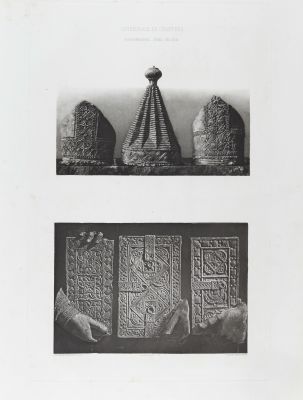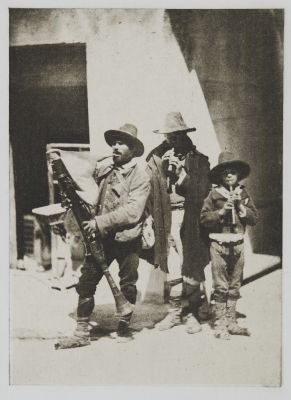
Title
Marchande des oeufsArtist
Nègre, Charles (French, 1820-1880)Key FigureDate
1850Process
CalotypeAtelier
Charles NègreImage Size
17 x 16 cm
Charles Nègre, Marchande des oeufs, ca. 1850. Salted paper print, after painting by Nègre.
With the advent of photography came hope of solving the age-old problem of reproducing and disseminating works of art, namely painting. Not only was there a commercial incentive to create copies of paintings, but it was also a social cause.
"The paintings which form the pride of our National Gallery, the existence of which is unknown to the mass even of those who reside in this city, may be made familiar to the most remote peasant by means of photographs… when we consider the immense number of landscapes and genre paintings, the contemplation of which has given hours of pleasure to a limited number of individuals, we cannot but wish that a similar pleasure should be within the reach of our poorer brethren who lack our advantages. Surely, if the taste of the masses is to be raised by contemplation of the beautiful, this invention offers the most ample means of accomplishing that object."[1]
Charles Nègre was born in the French Riviera town of Grasse and arrived in Paris to study painting around the time photography was announced in 1839. Nègre was intent on becoming a history painter and took up study with the popular master Paul Delaroche. Nègre’s fellow students included the future photographers Gustave Le Gray, Henri Le Secq, and Roger Fenton. Nègre was quite successful in his painting career, having had several paintings accepted into the prestigious annual Salon exhibitions and receiving a gold medal for his submissions in 1851 and 1852. Despite his success, by the early 1850s his attention had turned towards photography and his passionate pursuit of its improvement would occupy him for the rest of his life. Nègre was deeply moved by the 1848 revolution and his art began to reflect this newfound awareness of history and politics. Nègre’s began to depict the common genre types found on the streets of Paris – the washerwomen, chimneysweeps, organ grinders, and laborers. Although Nègre always identified himself as a painter, not primarily as a photographer, his photography began to influence his paintings. While he may have originally intended his photographs simply as studies, increasingly his paintings became iterations of his photographs. His ambition was to show photography’s importance in the representation of modern life. Nègre learned Talbot’s calotype process from Gustave Le Gray in a variation inspired by the refinements of Blanquart-Evrard. It was these paper-based negatives that first revealed to Nègre the artistic potential of photography.
This calotype comes originally from the collection of pioneering photography collector and dealer André Jammes, who acquired the definitive archive of Nègre’s work from a descendent in the 1950s. It is through Jammes that the work of this important and formative photographer became known in the 20th century. The important publications on Nègre by James Borcoman and Françoise Heilbrun in the 1970s and 1980s owe their existence to Jammes’s discovery, as does our current understanding of Nègre’s place in the canon of 19th-century photographers.
References
[1] Crawford, William. The Keepers of Light: A History & Working Guide to Early Photographic Processes. New York: Morgan & Morgan, 1979. Print
Lewis JW. Charles Negre in Pursuit of the Photographic. 2012.
Stephen Bann , "Photography and Reproduced Engraving" , Photographic Studies , 9 | May 2001 , [Online], posted September 10, 2008. URL: http://journals.openedition.org/photographicstudies/241. accessed June 15, 2019.
Françoise Heilbrun, Charles Nègre, 1820-1880, Das photographische Werk (Munich: Schirmer/Mosel GmbH, 1988).
James Borcoman, Charles Nègre, 1820-1880 (Ottawa: The National Gallery of Canada, 1976).
Jacob W. Lewis, Sun Pictures Catalogue Twenty-Two, Charles Nègre (New York: Hans P. Kraus Jr. Inc., 2013).











